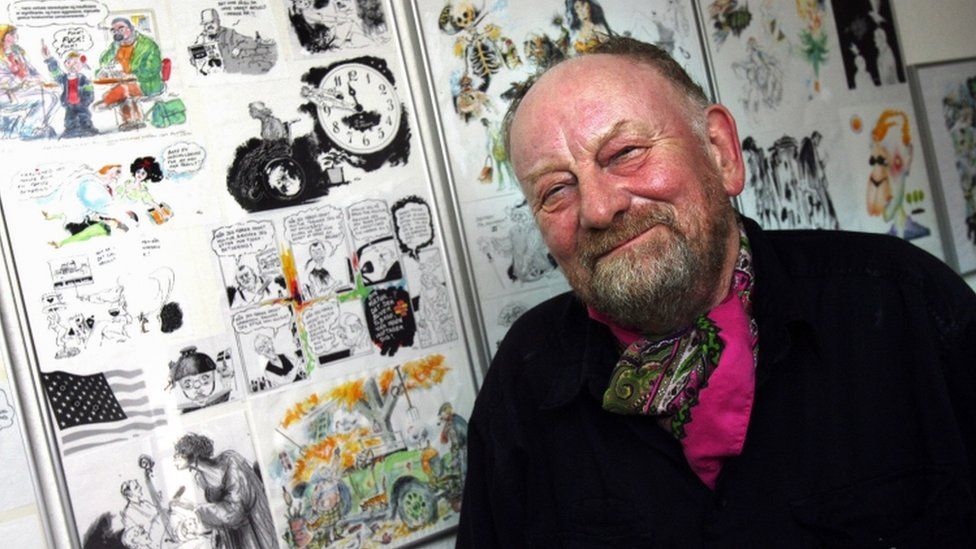Kurt Westergaard, Danish cartoonist behind Muhammad cartoon, dies at 86
- Published

Kurt Westergaard, a Danish cartoonist whose caricature of the Prophet Muhammad outraged many Muslims worldwide, has died at the age of 86.
He died after a long illness, his family told the Berlingske newspaper on Sunday.
Westergaard was a cartoonist for the conservative Jyllands-Posten newspaper from the early 1980s.
He became world famous in 2005 for his controversial image of the Prophet Muhammad in the newspaper.
He was behind the most controversial one of 12 cartoons published by the newspaper to make a point about self-censorship and criticism of Islam. It showed the prophet wearing a turban in the shape of a bomb.
Images of the Prophet Muhammad are taboo in Islamic tradition and many Muslims considered the cartoons extremely and deliberately offensive.
The cartoons led to protests in Denmark and across the Muslim world. Danish embassies were attacked and dozens died in the riots that followed.
The publication of the cartoons has left a lasting legacy. In 2015, 12 people were killed in an attack by Islamist militants on the offices of French satirical magazine Charlie Hebdo, which had published the cartoons.
Westergaard also received several death threats and was a target of assassination attempts. He first went into hiding but then decided to live openly in a heavily fortified home.
In 2008, Danish authorities charged three people with planning to murder Westergaard. Two years later they caught a man armed with a knife breaking into his home. Mohamed Geele was later convicted of attempted murder and terrorism and was jailed for nine years.
In his later years, Westergaard had to live with a bodyguard at secret addresses.
Speaking to Reuters news agency in 2008, Westergaard said he had no regrets about his drawing.
Many media organisations found ways of covering the story without showing the cartoons
He said the cartoon had generated "important" discussion about the place of Islam in Western countries with secular values.
"I would do it the same way (again) because I think that this cartoon crisis in a way is a catalyst which is intensifying the adaptation of Islam," he said.
"We are discussing the two cultures, the two religions as never before and that is important."
- Published20 October 2020
- Published28 October 2020
- Published31 October 2020